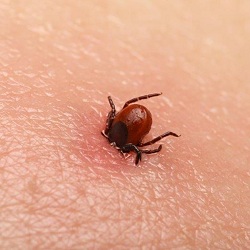How To Stop And Remove Ticks?
by Bob P. Pest Management ConsultantTicks can increase in the count at any time when the weather is favourable for them. With their population rise, the human and pet life in North Shore are posed to threats. Feeding on others' blood, the ticks easily carry and transmit infections like Lyme diseases. So, learning to be alert is a must for adults and children, and also keeping the pets safe once they are back from their outdoor activities, particularly near wooded areas.
Follow these 6 mentioned strategies for avoiding and confronting ticks.
1. Know the Tick
In Australia, the count of ticks species is huge. But on the North Shore of Sydney, the ticks are extremely notorious compared to the Australian Paralysis Ticks (Ixodes Holocyclus) flourished throughout Northern Sydney. Small ticks are the juveniles of paralysis ticks, with great abilities to cause health problems, similar to their adult counterparts. To get rid of them, you will have to hire tick control specialists from a well-known pest control firm in North Shore.
2. Prevention from Ticks
Wearing long-sleeved shirts and pants, with pants tucked into socks helps prevent ticks from climbing inside the pant legs. Using Insect Repellant with 30% DEET is a safe option – these last for six hours. If you are outside for long hours, then you might reapply.
Treating clothing with permethrin is another protective measure. Permethrin is medicine and chemical best used as a repellant. One permethrin application functions on clothing till 6 weeks or after 6 washings. Even they are good for sleeping bags and tents.
3. Checking Out for the Ticks
Ticks burrow into the skin for sucking blood. But their bite is painless. Since you are not feeling them biting, you will have to look out for them carefully. As soon as you are inside, conduct a "tick check" for everyone you have gone out with. An infected tick stays attached for 24 hours and then transmits the organism causing Lyme disease. Hence, finding them immediately is much important.
Checking thoroughly in and around the ears, behind the knees inside the belly button, in armpits, in hair and between legs is very important.
4. Removing the Ticks
Once a tick has been discovered, get hold of a wood stick and tweezers for removing. Where the tick is attached to the skin, grasp the tick there and pull up straight without twisting or crushing the pest.
Next, wash the bitten area and hands using soap and after you have removed the tick. Next, apply over–the–counter antibiotic ointment on the bitten site.
If the potentially tick-transmitted disease is worrying you, then place the tick on a plastic bag after you have removed it and take it to a doctor in case any symptoms develop.
5. Watch Out
When you hear someone has been bitten by a tick, then watch over for the signs of illness for the following days and weeks. Check out for fever, aches or rashes. A bull's–eye-shaped or circular rash around the bite site is the Lyme disease indication. There might be a spotty rash in the affected area. Get started with treatment immediately.
6. Take Time To Relax
Get the fear of ticks out of your mind. Keeping your outdoors safe and ticks free will do the job. The ticks control experts are here to handle the task. Remember, the disease contamination risk is much small. Before going out take precautions. After coming in, check for the ticks. Watch for the symptoms after a bite and get in touch with your health care provider for added safety.
You can beat the ticks. All that you have to be is wise and smart on time. While the pest control service providers are here to help in combating these miscreants, even you have to be alert to be out of ticks' reach. Follow the discussion closely so you can know how should you protect yourself.
Sponsor Ads
Created on Sep 19th 2022 01:14. Viewed 536 times.
Comments
No comment, be the first to comment.




